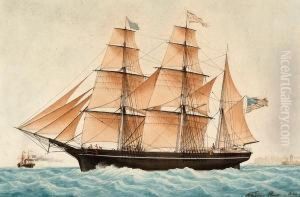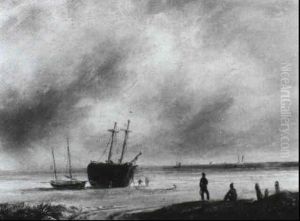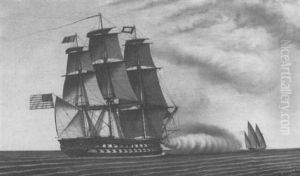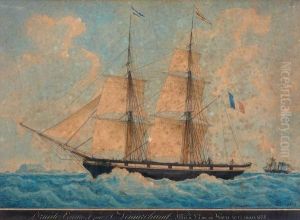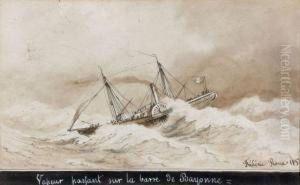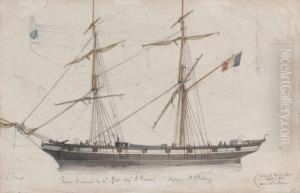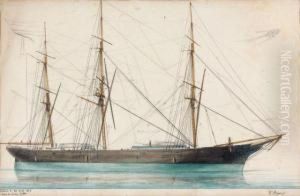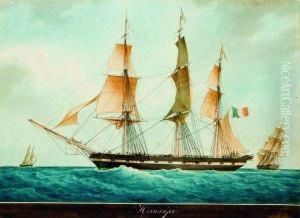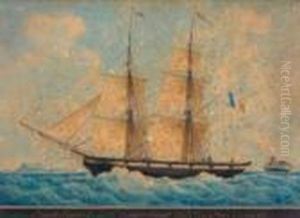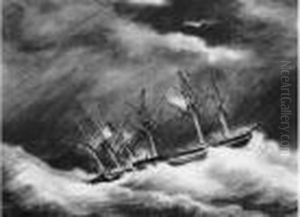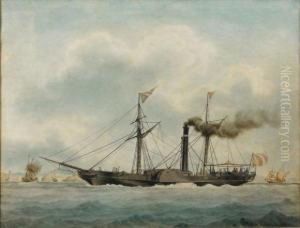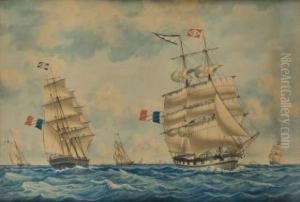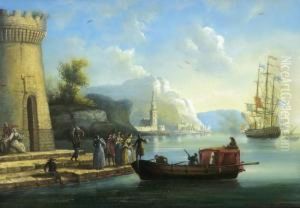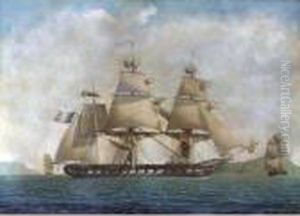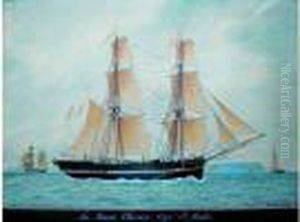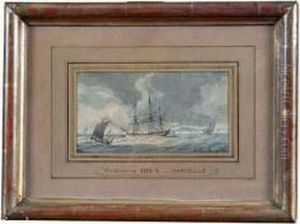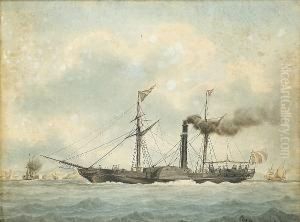Frederic Roux Paintings
Frederic Roux was a distinguished French artist, known primarily for his detailed and exquisite marine paintings and watercolors. Born in Bordeaux in 1805, Roux came from a family deeply engaged in the world of art; his father, Antoine Roux, was also a renowned marine painter, establishing a legacy that Frederic would continue and expand upon. This familial background provided Frederic with a strong foundation in art from a very young age, deeply influencing his eventual career path.
Throughout his life, Frederic Roux demonstrated an extraordinary ability to capture the essence of the sea and the vessels that traversed it. His works often depicted ships with remarkable accuracy and attention to detail, reflecting not only his artistic skills but also a deep understanding of maritime subjects. This expertise made his paintings highly sought after, not just by art collectors but also by maritime professionals and enthusiasts who appreciated the accuracy and lifelike quality of his representations.
Roux's career spanned an era of significant change in maritime history, including the transition from sail to steam-powered vessels. He meticulously documented these changes in his art, providing a valuable historical record of this transformative period in maritime technology. His works serve as an important visual documentation of the 19th-century maritime history, capturing the beauty and complexity of this era.
Beyond his contributions to marine painting, Frederic Roux was also involved in the artistic community of his time, contributing to the cultural life of France. He exhibited his works at various salons and exhibitions, gaining recognition and respect from his peers. Despite the fame and admiration he garnered during his lifetime, Roux remained dedicated to his craft, continuously honing his skills and capturing the maritime landscape with a passion and precision that few could match.
Frederic Roux passed away in 1870, leaving behind a rich legacy of art that continues to be celebrated for its contribution to marine painting and its historical value. His work remains a testament to his skill, dedication, and the profound impact he had on the world of art.
